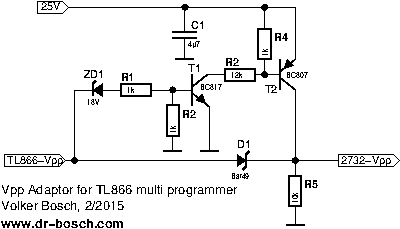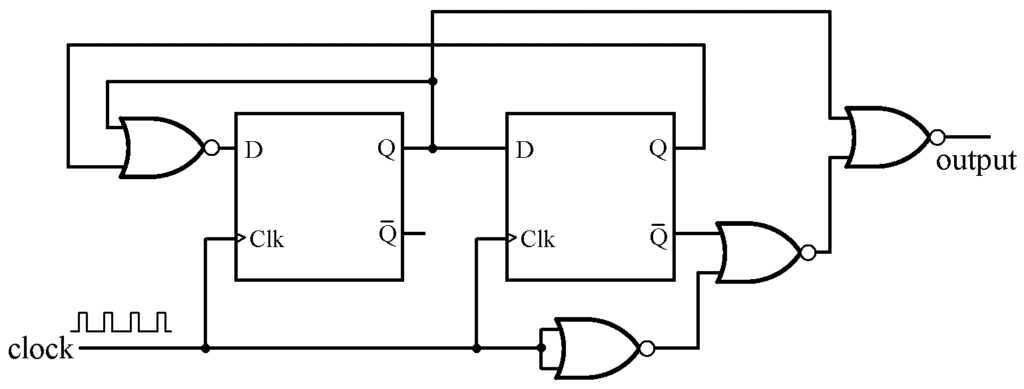I wanted to implement a XModem to incorporate into the Z80 monitor program for my CPUVille Z80. It needed to be small to fit in the 2K ROM monitor, the whole thing ends up being 264 additional bytes. Here is the code for that:
; based on 6502 version http://www.6502.org/source/io/xmodem/xmodem-receive.txt
; re-coded by Tom Lovie 2023-03-23
; sub write_string and put_chr are already in ROM
monitor_warm_start: equ 0450h
SOH equ 01h ; start block
EOT equ 04h ; end of text marker
ACK equ 06h ; good block acknowledged
NAK equ 15h ; bad block acknowledged
CAN equ 18h ; cancel (not standard, not supported)
CR equ 0dh ; carriage return
LF equ 0ah ; line feed
ESC equ 1bh ; ESC to exit
rbuff: equ 0c00h ; page aligned receive buffer
rbuffp: equ 0ch ; page of receive buffer
sbuff: equ 1000h ; storage buffer to place received data
sbuffp: equ 10h ; storage buffer page
org 0800h
call XModem
jp monitor_warm_start
XModem:
ld hl,msg
call write_string
ld hl,sbuff
ld (ptr),hl ; initialize the storage pointer
ld a,01h
ld (blkno),a ; start at block number 1
StartX: ld a,NAK ; Start in CRC mode - no fallback
call put_chr ; send it
ld a,00h ; loop counter in a
call GetByte ; try to get a byte
jr c,GotByte
jr nc,StartX ; if not try again
StartBlk: ld a,00h ; loop counter in a
call GetByte ; try to get a byte
jr nc,StartBlk
GotByte: cp ESC ; want to quit
ret z
cp SOH ; start of block?
jr z,BegBlk
cp EOT ; end of text
jr nz,BadCrc
jr Done
BegBlk: ld hl,rbuff ; start hl at the receive buffer
GetBlk: ld a,00h ; 3 second window to receive char
GetBlk1: call GetByte ; get next char
jr nc,BadCrc ; just sending NAK
GetBlk2: ld (hl),a ; store the character in buffer
inc hl ; increment the buffer
ld a,83h
cp l ; <01><FE><128 bytes><CHKSUM>
jr nz,GetBlk ; get 131 characters (0x83)
ld l,00h ; start at beginning of buffer
ld a,(blkno) ; actual block number
cp (hl) ; sent block number
jr z,GoodBlk1 ; block number is expected
jr ErrorOut ; error out of the xmodem routine
GoodBlk1: xor 0ffh ; compliment the actual block no
inc hl
cp (hl) ; compare to second byte
jr z,GoodBlk2 ; block number compliment
jr ErrorOut ; error out of the xmodem routine
GoodBlk2: ld h,rbuffp ; point hl at the receive buffer
ld l,81h ; last byte
ld a,00h ; initialize a
CalcCrc: add (hl) ; compute running total start 82h
dec l
jr nz,CalcCrc
add a,(hl) ; do the block number as well
inc a ; because blockno + cpl = 255.
ld l,82h ; (hl) is the checksum
cp (hl)
jr z,GoodCrc
BadCrc: call Flush ; flush serial buffer
ld a,NAK ; and send
call put_chr ; a NAK
jr StartBlk ; restart the block
GoodCrc: ld l,02h ; hl is now pointing data
ld de,(ptr) ; de is now pointing storage
ld c,80h ; 128 bytes
ld b,00h ;
ldir ; copy the block
ld (ptr),de ; store the current pos
ld a,(blkno) ; load the block number
inc a
ld (blkno),a ; store the block number back
ld a,ACK ; send ACK
call put_chr
jp StartBlk ; get next block
Done: ld a,ACK
call put_chr
call Flush
ld hl,good ; load success message
call write_string
ret
ErrorOut: ld hl,err ; print error message and exit
call write_string
call Flush ; discard remaining buffer
ret ; return after fatal error
; subroutine to wait a set amount of time to get a byte
; Byte will be in A, destroys BC (delay loop)
GetByte: ld b,a
ld c,a
GetByteLoop: call get_chr
ret c ; return if got chr (carry set)
dec c
jr nz,GetByteLoop
dec b
jr nz,GetByteLoop ; delay loop
or a ; clear carry flag
ret
; subroutine to flush the receive buffer
; destroys A
Flush: ld a,80h
call GetByte
jr c,Flush
ret
;Get one byte from the serial port if available.
;Returns with byte in A reg with carry flag set, if carry flag clear means no character available
get_chr: or a ;clear carry flag
in a,(3) ;get status
and 002h ;check RxRDY bit
ret z ;not ready, quit
in a,(2) ;get char
scf ;set carry flag we got a char
ret
ptr: dfw 0
blkno: dfb 0
err: dfb "Up Err!",CR,LF,0
good: dfb "Up Ok!",CR,LF,0
msg: dfb CR,LF,"X/CSUM <Esc> to q",CR,LF,0


